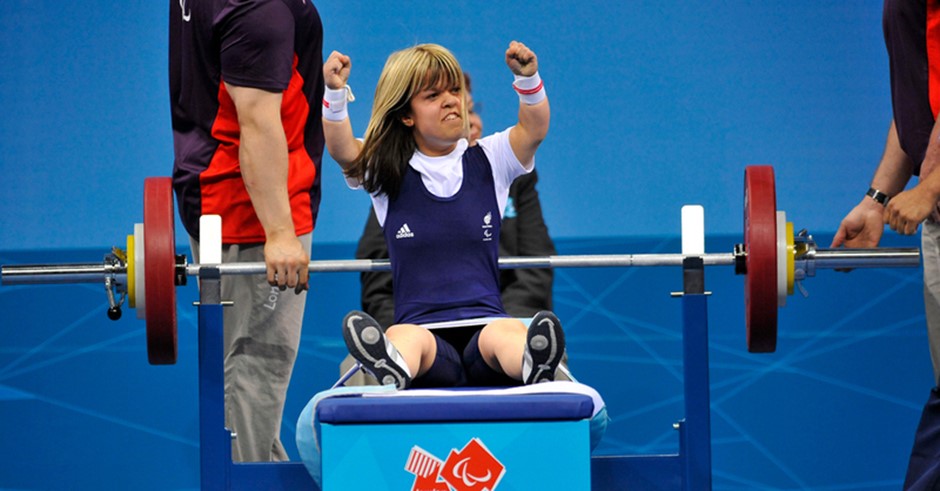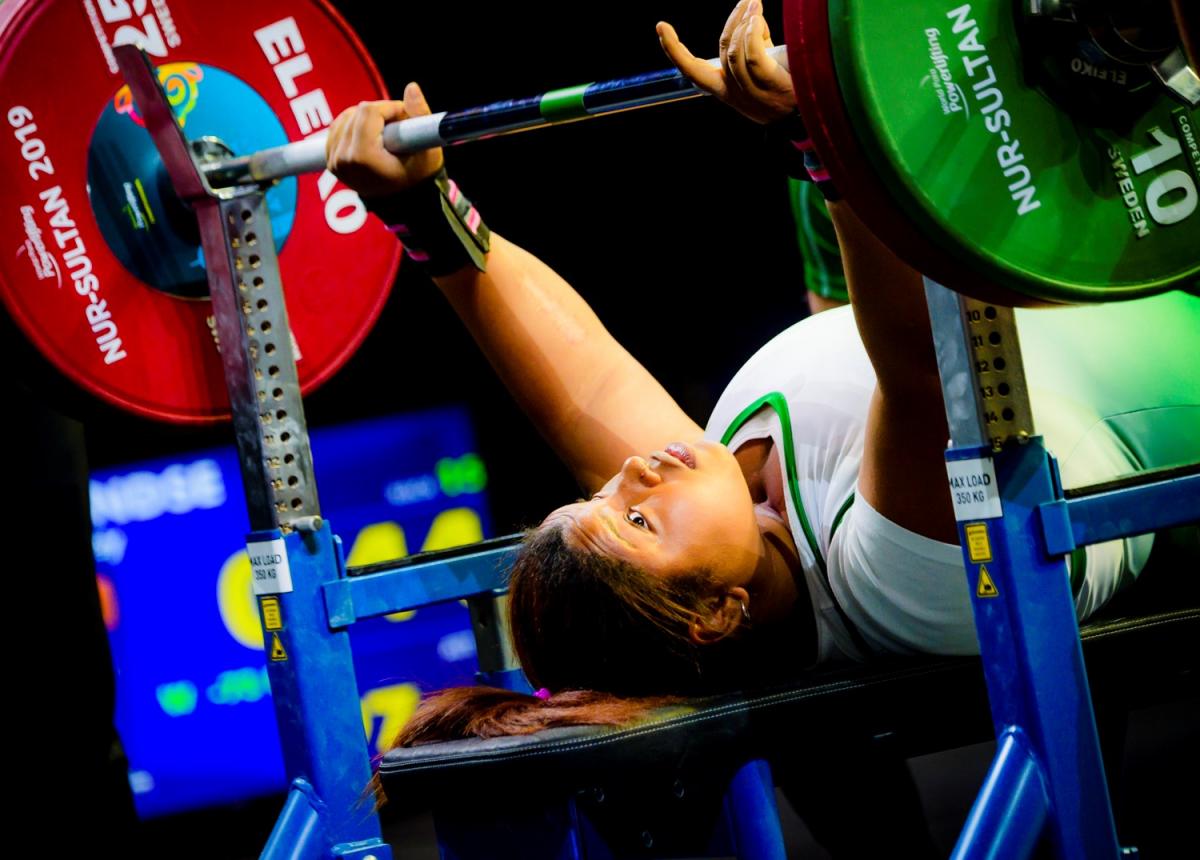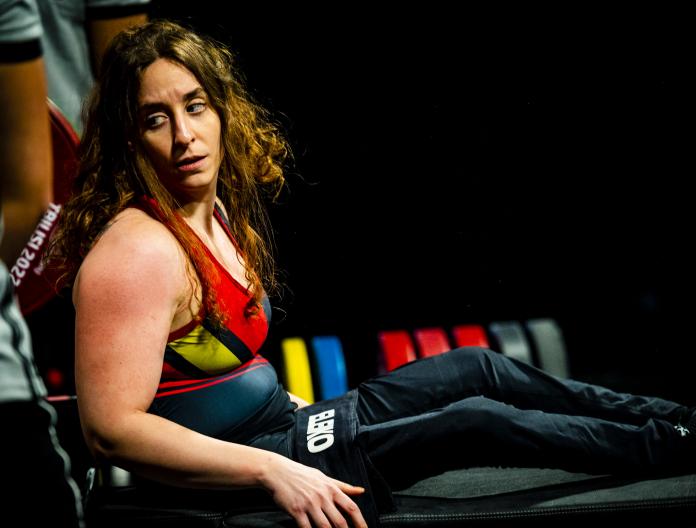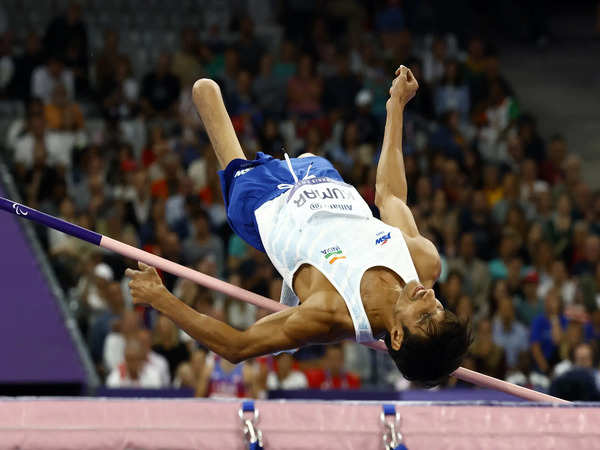A Deep Dive into the Women’s and Men’s Powerlifting Finals

Table of contents
- The Essence of Powerlifting in Paralympics
- Powerlifting Paralympics Rules
- Today’s Powerlifting Finals: A Preview
- Women’s 50kg Final: A Fierce Showdown
- Men’s 59kg Final: A Battle of Strength
- Women’s 55kg Final: The Pinnacle of Determination
- Men’s 65kg Final: A True Test of Power
- The Indomitable Spirit: Paralympic Powerlifting as a Global Movement
- From Humble Beginnings to Global Stage: The Evolution of Paralympic Powerlifting
- More Than Medals: Representation and Inclusion on the World Stage
- Tales of Triumph: Inspirational Stories of Paralympic Powerlifters
- A Catalyst for Change: Powerlifting’s Impact on the Paralympic Movement
- The Future of Paralympic Powerlifting: A Legacy of Strength and Inspiration
- Summary
The Essence of Powerlifting in Paralympics
Overview of Powerlifting as a Paralympic Sport
Powerlifting, a sport that demands strength, endurance, and technique, has found a prominent place in the Paralympic Games. This athletic discipline involves lifting the maximum weight possible in three distinct lifts: the squat, bench press, and deadlift. For athletes with disabilities, powerlifting offers a platform to showcase their strength, determination, and the human spirit’s indomitable nature.

The Paralympic powerlifting competition is a captivating spectacle, where athletes from around the world come together to compete at the highest level. The sport is divided into different weight classes, ensuring fair competition for athletes of varying sizes. Each lift is carefully scrutinized by judges, who evaluate the athlete’s form, technique, and the weight lifted. The competitor who lifts the highest total weight across the three lifts emerges victorious.
Significance of Women’s and Men’s Categories in Paralympics
The inclusion of both women’s and men’s categories in Paralympic powerlifting is a testament to the sport’s commitment to gender equality. Women’s powerlifting has gained significant recognition in recent years, with athletes demonstrating exceptional strength and skill. The presence of both men’s and women’s categories not only promotes gender diversity but also provides opportunities for female athletes to compete at the highest level and inspire others.

The women’s powerlifting competition in the Paralympics is equally intense and competitive as the men’s event. Athletes train rigorously to improve their strength, technique, and overall performance. The inclusion of women’s categories in the Paralympics has helped to break down stereotypes and showcase the incredible athletic abilities of women with disabilities.
How Powerlifting Empowers Athletes with Disabilities
Powerlifting plays a crucial role in empowering athletes with disabilities. The sport provides a sense of accomplishment, self-worth, and independence. By overcoming physical challenges and achieving personal bests, powerlifting athletes demonstrate that their disabilities do not define them.

- Physical and Mental Benefits: Powerlifting offers numerous physical and mental benefits for athletes with disabilities. It can improve strength, flexibility, and cardiovascular health. Additionally, the sport can boost self-esteem, confidence, and overall well-being.
- Social Inclusion: Powerlifting fosters a sense of belonging and social inclusion for athletes with disabilities. Training and competing with others who share similar experiences can help to reduce feelings of isolation and discrimination.
- Inspiration and Role Models: Paralympic powerlifting athletes serve as inspiring role models for people with disabilities. Their achievements demonstrate that anything is possible with determination, hard work, and a positive mindset.
Powerlifting Paralympics Rules
Powerlifting in the Paralympic Games is a sport of strength and technique, where athletes with different impairments compete to lift the heaviest weight possible in the bench press. Here’s a breakdown of the key rules:
Eligibility and Classification:
- Impairments: Athletes with physical impairments affecting their lower limbs or hips are eligible. This includes amputations, spinal cord injuries, cerebral palsy, and other conditions.
- Classification: Athletes are classified based on their functional ability, ensuring a level playing field. There are 10 different weight classes for both men and women.
The Lift:
- Starting Position: The lifter lies flat on their back on the bench, feet flat on the floor. The bar is lifted from the rack and held at arm’s length, with elbows locked.
- “Start” Command: Once the lifter is in a stable position, the referee gives the “start” command.
- Lowering the Bar: The lifter lowers the bar to their chest under control, touching lightly and pausing for a moment.
- Pressing the Bar: After the pause, the lifter presses the bar upwards to full arm’s length, elbows locked.
- “Rack” Command: Once the bar is held steady in the up position, the referee gives the “rack” command, signaling the lifter to return the bar to the rack.
Judging and Scoring:
- Three Attempts: Each lifter has three attempts to achieve their highest weight. The heaviest successful lift counts as the athlete’s final score.
- Three Judges: Three referees judge each lift, looking for proper technique and adherence to rules.
- “Good Lift” Signal: Two out of three referees must signal a “good lift” for the attempt to count.
- Common Reasons for “No Lift”: Failing to pause on the chest, not locking the elbows in the up position, uneven pressing of the bar, or any movement of the feet.
Winning:
- Weight Class Winners: Within each weight class, the lifter with the highest successful lift wins.
- Ties: In case of a tie, the lighter athlete wins.
Adaptations for Athletes with Impairments:
- Bench Straps: Athletes can use straps to secure themselves to the bench for stability.
- Leg Straps: Depending on the classification, leg straps may be used to assist with leg positioning.
- Assistants: Assistants are present to help athletes get into position on the bench and provide support if needed.
This is an oversimplification of the rules. The Original Copy of rules is over here: Paralympic Rules
Today’s Powerlifting Finals: A Preview
Get ready for an exciting day of Paralympic powerlifting finals! Four weight categories will be taking center stage today, with athletes from around the world vying for gold medals.
Men’s 59kg (Standing)
This category is expected to be highly competitive, with athletes from Peru, Ukraine, and Chile all considered strong contenders. D. Quispe from Peru has been a consistent performer and will be a favorite to win. K. Panasiuk from Ukraine is another athlete to watch, known for his powerful lifts. J. Garrido Acevedo from Chile will be looking to surprise and secure a podium finish.

Women’s 55kg (Standing)
The women’s 55kg category promises to be a thrilling contest. D. Turaeva from Uzbekistan is a defending champion and will be aiming to retain her title. H.T.L. Châu from Vietnam has been making significant strides and could challenge Turaeva for the top spot. E. Romano from Italy is another strong competitor who could factor into the final outcome.

Men’s 65kg (Standing)
This category features a mix of experienced athletes and rising stars. J. Carinao from Chile is a seasoned competitor with a proven track record. H. Bettir from Algeria has been making a name for himself on the international stage. Ashok from India is a dark horse who could surprise many with a strong performance.
Men’s 79kg (Standing)
The final event of the day will be the men’s 79kg category. L. Zabala from Spain is a defending champion and will be looking to maintain his dominance. T.L.P. Đặng from Vietnam has been a consistent performer and could challenge Zabala for the gold medal. M. Rizonaide da Silva from Brazil is another athlete to watch, known for his powerful lifts.
These finals are sure to be filled with excitement, drama, and incredible athleticism. Don’t miss out on the chance to witness these talented athletes compete at the highest level.
Women’s 50kg Final: A Fierce Showdown
The women’s 50kg powerlifting final promises to be a thrilling spectacle. Three of the world’s top athletes will be competing for the gold medal, each bringing their unique strengths and experiences to the table.
L. Zabala (Spain)
L. Zabala is a seasoned powerlifter from Spain who has consistently performed at the highest level. Her impressive biography includes numerous medals and achievements in both national and international competitions. Zabala’s training journey has been characterized by dedication, discipline, and a relentless pursuit of excellence. Her technical prowess and mental fortitude have made her a formidable opponent.

T.L.P. Đặng (Vietnam)
T.L.P. Đặng is a rising star from Vietnam who has quickly established herself as one of the top powerlifters in her weight class. Đặng’s medal history speaks for itself, with numerous podium finishes in prestigious tournaments. Despite facing challenges and obstacles, Đặng has persevered and achieved remarkable success. Her determination and unwavering spirit have made her a force to be reckoned with.

M. Rizonaide da Silva (Brazil)
M. Rizonaide da Silva is a Brazilian powerlifter with a promising future. Da Silva’s life has been shaped by her passion for the sport, and her training routine is designed to maximize her potential. She has consistently shown improvement in her performances, and her previous results indicate that she is capable of challenging the top athletes in the world.

Anticipated Matchup
The anticipated matchup between Zabala, Đặng, and Da Silva is sure to be a closely contested affair. Previous results and head-to-head stats suggest that all three athletes have the ability to win. The key factors for success in this competition will be strength, form, and mental preparation. The athlete who can execute the lifts with the most power and precision while maintaining composure under pressure is likely to emerge victorious.
Predictions and Insights
While it is difficult to predict the exact outcome of the women’s 50kg final, L. Zabala is perhaps the slight favorite based on her experience and consistent performance. However, T.L.P. Đặng and M. Rizonaide da Silva should not be underestimated. Both athletes have the potential to upset the odds and claim the gold medal.
Each athlete brings their unique strengths to the competition. Zabala’s technical skill and mental toughness are undeniable. Đặng’s determination and fighting spirit could give her the edge. Da Silva’s raw power and potential for improvement make her a dangerous competitor.
Ultimately, the women’s 50kg final will be a thrilling contest that will likely come down to the wire. The athlete who can perform at their best on the day will be crowned the champion.
Men’s 59kg Final: A Battle of Strength
The men’s 59kg powerlifting final promises to be a thrilling showdown between three of the world’s top athletes. D. Quispe from Peru, K. Panasiuk from Ukraine, and J. Garrido Acevedo from Chile will be competing for the gold medal.
D. Quispe (Peru)
D. Quispe is a seasoned powerlifter from Peru who has been a consistent performer on the international stage. His journey to Paralympic success has been marked by hard work, dedication, and a relentless pursuit of excellence. Quispe’s previous records and achievements speak for themselves, making him a strong contender for the gold medal.

K. Panasiuk (Ukraine)
K. Panasiuk is a Ukrainian powerlifter with a long history of success in the sport. His key stats and performances in previous competitions have established him as one of the favorites in this weight class. Panasiuk’s training approach is known for its intensity and focus on technical perfection.

J. Garrido Acevedo (Chile)
J. Garrido Acevedo is a rising star from Chile who has been making waves in the world of powerlifting. His personal story is one of inspiration and determination, and his achievements in recent years have placed him among the top athletes in his weight class. Acevedo’s expectations for the final are high, and he will be looking to make a statement on the world stage.

Clash of Titans
The tactical comparison between Quispe, Panasiuk, and Acevedo is fascinating. Each athlete has their own unique strengths and weaknesses. Quispe is known for his raw power and explosive lifts. Panasiuk’s technical precision and consistency are his greatest assets. Acevedo’s determination and mental toughness could give him the edge.
What separates the favorites from the underdogs in this competition is often a combination of factors, including physical strength, technical ability, and mental preparation. The athlete who can execute the lifts with the most power and precision while maintaining composure under pressure is likely to emerge victorious.
Final Thoughts
The rising popularity of men’s powerlifting in the Paralympics is a testament to the sport’s ability to inspire and empower athletes with disabilities. The 59kg final promises to be a showcase of incredible athleticism and determination.
Looking ahead, the future of men’s powerlifting in the Paralympics is bright. There are many talented young athletes who are poised to make their mark on the sport. As the competition continues to evolve, we can expect to see new strategies, techniques, and records being broken.
Women’s 55kg Final: The Pinnacle of Determination
The women’s 55kg powerlifting final promises to be a thrilling spectacle, featuring three of the world’s top athletes. D. Turaeva from Uzbekistan, H.T.L. Châu from Vietnam, and E. Romano from Italy will be competing for the gold medal.
D. Turaeva (Uzbekistan)
D. Turaeva is a seasoned powerlifter from Uzbekistan who has achieved numerous personal accomplishments throughout her career. Her career highlights include multiple Paralympic medals and world records. Turaeva’s upcoming prospects are bright, as she continues to push the boundaries of her sport.
H.T.L. Châu (Vietnam)
H.T.L. Châu is an inspiring athlete from Vietnam who has overcome significant challenges to reach the pinnacle of her sport. Her key strengths include her determination, resilience, and technical skill. Châu’s journey is a testament to the power of the human spirit and the importance of perseverance.
E. Romano (Italy)
E. Romano is a talented powerlifter from Italy who has consistently performed at a high level. Her career has been marked by steady progress and consistent results. Romano’s current form and preparation suggest that she is a strong contender for the gold medal.
Competitive Analysis
Each of the competitors in the women’s 55kg final has their own unique strengths and weaknesses. D. Turaeva is a proven champion with a wealth of experience. H.T.L. Châu is a rising star with a strong work ethic and determination. E. Romano is a consistent performer with a solid technical foundation.
Historic performances in similar events and the pressure of the finals will undoubtedly play a significant role in determining the outcome. The athlete who can handle the pressure and execute their lifts with the most precision and power is likely to emerge victorious.
Potential Outcome
While D. Turaeva is the reigning champion and a strong favorite, H.T.L. Châu or E. Romano could surprise everyone with a breakout performance. The role of mental endurance in high-pressure scenarios cannot be overstated. The athlete who can maintain their composure and focus under the intense pressure of the final will have a significant advantage.
The women’s 55kg powerlifting final promises to be a thrilling contest that will keep spectators on the edge of their seats. The outcome is uncertain, and any of the three competitors could claim the gold medal.
Men’s 65kg Final: A True Test of Power
The men’s 65kg powerlifting final promises to be a thrilling showdown between three of the world’s top athletes. J. Carinao from Chile, H. Bettir from Algeria, and Ashok from India will be competing for the gold medal.
J. Carinao (Chile)
J. Carinao is a seasoned powerlifter from Chile who has been a consistent performer on the international stage. His path to success has been marked by hard work, dedication, and a relentless pursuit of excellence. Despite facing challenges, Carinao has persevered and achieved remarkable success. His expectations for the final are high, and he will be looking to make a statement on the world stage.
H. Bettir (Algeria)
H. Bettir is a rising star from Algeria who has quickly established himself as one of the top powerlifters in his weight class. His key achievements include numerous podium finishes in prestigious tournaments. Bettir’s personal story is one of inspiration and determination, and his fan support has been unwavering.
Ashok (India)
Ashok is a promising young powerlifter from India who has been making waves on the international stage. His achievements in recent years have placed him among the top athletes in his weight class. Ashok’s role in Indian powerlifting is significant, and he is a source of inspiration for many aspiring athletes.
Strength Showdown
The head-to-head comparison between Carinao, Bettir, and Ashok is fascinating. While each athlete has their own unique strengths, the key stats, lifts, records, and recent performance will play a crucial role in determining the outcome. All three competitors have the ability to lift heavy weights and break records.
How each athlete has prepared for this moment will also be a factor. The training regimens, mental preparation, and overall strategy will all contribute to their performance on the day.
Winning Factors
To secure a podium finish in the men’s 65kg final, athletes need to focus on several key factors. Strength is obviously essential, but technique and mental preparation are equally important. The ability to execute the lifts with precision and power while maintaining composure under pressure will be crucial.
The psychological edge in the final lift can be a deciding factor. The athlete who can maintain their focus and execute their final lift with confidence and determination is likely to emerge victorious.
The men’s 65kg powerlifting final promises to be a thrilling contest that will keep spectators on the edge of their seats. The outcome is uncertain, and any of the three competitors could claim the gold medal.
The Indomitable Spirit: Paralympic Powerlifting as a Global Movement
Paralympic powerlifting, far more than a display of raw strength, embodies the human spirit’s boundless potential. It is a testament to resilience, determination, and the unwavering belief in achieving the extraordinary, regardless of the challenges life throws our way. This awe-inspiring sport has not only evolved into a global phenomenon within the Paralympic Games but has also become a beacon of inclusivity, shattering stereotypes and inspiring millions worldwide.
This exploration delves deep into the world of Paralympic powerlifting, tracing its remarkable growth, celebrating the inspirational journeys of its athletes, and examining its profound impact on the Paralympic movement and beyond.
From Humble Beginnings to Global Stage: The Evolution of Paralympic Powerlifting
The roots of Paralympic powerlifting can be traced back to the rehabilitation efforts following World War II, where weightlifting was used as a tool to rebuild strength and mobility in injured veterans. This therapeutic practice gradually transitioned into a competitive sport, initially for wheelchair athletes.
- 1964: A Landmark Debut: Paralympic powerlifting made its grand debut at the 1964 Paralympic Games in Tokyo, with a sole focus on weightlifting for male athletes with spinal cord injuries.
- Expanding Horizons: Recognizing the sport’s transformative power, the Paralympic Games in Arnhem, Netherlands (1980), witnessed a significant expansion as female powerlifters joined the ranks, showcasing their incredible strength and determination.
- Refining the Rules: Over the years, the rules and classifications within Paralympic powerlifting have been continuously refined to ensure a level playing field for athletes with a diverse range of impairments. Today, athletes are categorized based on their functional abilities, competing within specific weight classes.
- Growing Participation: The Paralympic Games in Sydney (2000) marked a pivotal moment as powerlifting became a truly global sport, attracting athletes from every corner of the world. This surge in participation underscores the sport’s growing appeal and its ability to transcend geographical boundaries.
More Than Medals: Representation and Inclusion on the World Stage
Paralympic powerlifting is not just about lifting weights; it’s about lifting barriers and challenging perceptions. The very essence of the sport is built on principles of representation and inclusion, showcasing the extraordinary abilities of athletes with impairments on a global platform.
- Challenging Stereotypes: By excelling in a sport often associated with physical prowess, Paralympic powerlifters shatter stereotypes and preconceived notions about disability. Their performances dismantle limitations and redefine what is possible.
- Amplifying Diverse Voices: The Paralympic Games provide a powerful platform for athletes from diverse backgrounds to share their stories, struggles, and triumphs with the world. These narratives of resilience inspire not just aspiring athletes but also individuals facing their own personal challenges.
- Building Bridges of Understanding: The global nature of the Paralympic Games fosters cross-cultural exchange and understanding. By witnessing the incredible feats of Paralympic powerlifters, audiences worldwide develop a deeper appreciation for human potential and the importance of inclusivity.
Tales of Triumph: Inspirational Stories of Paralympic Powerlifters
The world of Paralympic powerlifting is filled with awe-inspiring stories of athletes who have overcome incredible odds to achieve greatness. Their journeys serve as powerful reminders that with unwavering determination, anything is possible.
- Siamand Rahman (Iran): The late Siamand Rahman, a true legend in the sport, etched his name in history books by becoming the first Paralympian to lift over 300kg in the men’s over 107kg category. His unparalleled strength and infectious smile captivated audiences worldwide, making him an icon of the Paralympic movement.
- Lucy Ejike (Nigeria): A four-time Paralympic gold medalist, Lucy Ejike’s journey is one of incredible resilience and unwavering dedication. Despite facing numerous challenges throughout her life, she has emerged as a dominant force in women’s powerlifting, inspiring countless individuals with her unwavering spirit.
- Sherif Osman (Egypt): Nicknamed the “Egyptian King,” Sherif Osman is a force to be reckoned with in the men’s up to 59kg category. Having won gold in four consecutive Paralympic Games, Osman’s relentless pursuit of excellence continues to inspire aspiring athletes globally.
- Tamara Podpalnaya (Russia): A dominant force in women’s powerlifting, Tamara Podpalnaya’s story exemplifies the transformative power of sport. Despite facing significant challenges due to her impairment, Podpalnaya discovered her passion for powerlifting, finding strength and purpose through the sport.
These are just a few examples of the many remarkable athletes who have graced the Paralympic powerlifting stage. Each athlete’s journey is unique and inspiring, showcasing the indomitable spirit that resides within us all.
A Catalyst for Change: Powerlifting’s Impact on the Paralympic Movement
Paralympic powerlifting, beyond the thrill of competition and the pursuit of personal glory, plays a vital role in advancing the broader mission of the Paralympic movement: to create a more inclusive and accessible world for all.
- Raising Awareness and Challenging Perceptions: By showcasing the incredible abilities of athletes with impairments, Paralympic powerlifting challenges societal perceptions of disability, fostering a deeper understanding and appreciation for human diversity.
- Driving the Push for Inclusivity: The sport’s growing popularity helps break down barriers and advocates for greater inclusion of people with disabilities in all aspects of life, from education and employment to sports and recreation.
- Inspiring a New Generation: The incredible achievements of Paralympic powerlifters serve as a beacon of hope and inspiration for individuals with disabilities worldwide, encouraging them to pursue their dreams and break down limitations.
- Empowering Through Sport: Paralympic powerlifting empowers athletes not just physically but also emotionally and socially. The camaraderie among athletes, the support of coaches and trainers, and the roar of the crowd create an environment where individuals can thrive and reach their full potential.
The Future of Paralympic Powerlifting: A Legacy of Strength and Inspiration
As we look toward the future, Paralympic powerlifting is poised to continue its upward trajectory, attracting even greater global attention and inspiring generations to come. The sport’s commitment to inclusion, combined with the awe-inspiring performances of its athletes, ensures that Paralympic powerlifting will remain a powerful force for positive change in the world.
- Expanding Reach and Participation: With each Paralympic Games, powerlifting attracts a wider audience, raising awareness and inspiring more individuals with impairments to engage in the sport.
- Technological Advancements: Advancements in assistive technology and training methods are continuously pushing the boundaries of what’s possible in Paralympic powerlifting, leading to even more impressive feats of strength and athleticism.
- A Platform for Advocacy: Paralympic powerlifters are using their platform to advocate for greater inclusivity and accessibility for people with disabilities, driving social change and promoting a more equitable world.
Summary
- Powerlifting’s Essence: It highlights the sport’s focus on strength, endurance, and technique, emphasizing its role in showcasing the determination and abilities of athletes with disabilities.
- Importance of Gender Categories: The blog underscores the significance of having both men’s and women’s categories, promoting gender equality and providing opportunities for female athletes to excel and inspire.
- Empowerment through Sport: It discusses how powerlifting empowers athletes with disabilities by improving physical and mental health, fostering social inclusion, and providing role models.
- Rules and Regulations: The post clearly explains the rules of Paralympic powerlifting, including eligibility criteria, lifting techniques, judging standards, and adaptations for athletes with impairments.
- Preview of Finals: It provides an exciting preview of the day’s powerlifting finals, focusing on four weight categories and highlighting key contenders in each.
- Individual Weight Class Analysis: The blog dives deeper into specific weight categories (Women’s 50kg, Men’s 59kg, Women’s 55kg, Men’s 65kg), analyzing the strengths, weaknesses, and potential outcomes for each athlete.
- Powerlifting as a Global Movement: The post takes a broader perspective, exploring Paralympic powerlifting’s evolution from humble beginnings to a global phenomenon. It highlights the importance of representation, inclusion, and the role these athletes play in breaking down stereotypes.
- Inspirational Stories: The blog celebrates the inspirational journeys of legendary Paralympic powerlifters, such as Siamand Rahman, Lucy Ejike, Sherif Osman, and Tamara Podpalnaya, who have overcome tremendous obstacles to achieve greatness.
- A Catalyst for Change: It emphasizes how Paralympic powerlifting drives social change by raising awareness about disability, promoting inclusivity, and inspiring a new generation of athletes.
- Looking to the Future: The blog concludes by expressing optimism about the future of Paralympic powerlifting, predicting continued growth, technological advancements, and the use of the platform for advocacy.

